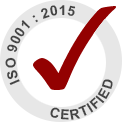Bright Electroless Gold
A gold plating solution for depositing thin, uniform layers of 24 karat gold by an electroless immersion process – for printed circuit boards, transistor headers, electrical connectors, diode leads, lamps and other electronic parts.
FEATURES
- Economical gold plating
- Plates bright gold on copper, kovar, brass, nickel, tin-lead solders and indium antimonide
- Excellent solution stability
- Operates with simple control of plating solution
- Ready-to-use – no mixing required.
BRIGHT ELECTROLESS GOLD
Description
Bright Electroless Gold is formulated as a trouble-free gold plating solution designed to plate gold on metal parts by an electroless immersion process. This process operates by the electroless displacement of base metals by gold brought about by a difference in EMF potentials.
Bright Electroless Gold as normally supplied is ready to use without further modifications.
Bright Electroless Gold will deposit gold on most common metals and alloys including copper, commercial brass, kovar, nickel, tin-lead solders, pure-tin, iron, and indium antimonide.
PROPERTIES OF BRIGHT ELECTROLESS GOLD
| Gold content per gallon | 1/3 tr. oz. |
| Plating Coverage/gal. | 175 sq.ft./1.25 x 10-6 in. thick |
| pH | 7 – 9 |
| Operating temperature | 50 – 90 °C |
| Copper, nickel, kovar, etc. | 90 °C |
| Tin-lead solders, pure-tin | 50 °C |
| Plating time | 10 min (Cu), 15 min (Ni) |
| Tank | Pyrex glass |
| Bath Life | unlimited until gold is depleted |
| Storage | Room Temperature |

APPLICATION
Metal parts to be plated should be thoroughly cleaned before use. The normal cleaning procedures for electroplating are adequate.
The solution of Bright Electroless Gold will show a decrease in pH with use. The pH should not be allowed to deviate from the normal conditions for plating since inferior deposits result. Adjustment of pH can be conveniently accomplished by the addition of small amounts of ammonium hydroxide to raise pH or citric acid to lower it.
The recommended plating temperature is 90 °C for most metals. However, for tin-lead solders and pure-tin an optimum temperature of 50 °C is recommended.

